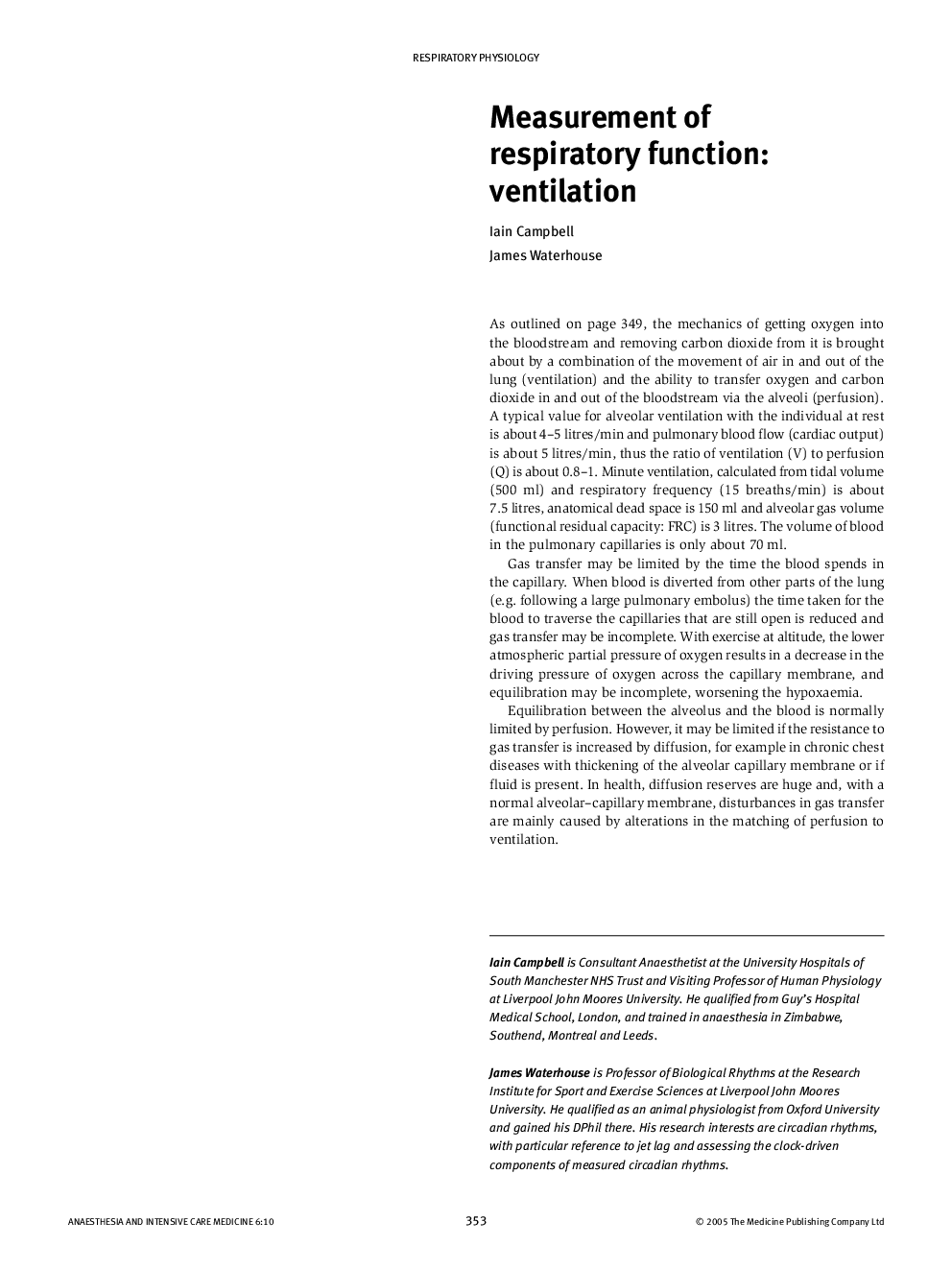| Article ID | Journal | Published Year | Pages | File Type |
|---|---|---|---|---|
| 9089482 | Anaesthesia & Intensive Care Medicine | 2005 | 5 Pages |
Abstract
Ventilation is traditionally assessed by measuring static lung volumes (e.g. total lung capacity, vital capacity). Measurement of functional residual capacity requires the use of a tracer gas such as helium or nitrogen. The results are compared with standards for age, weight and height. For clinical purposes, by the bedside, forced expiratory volume in 1 second (FEV1) and forced vital capacity (FVC) may have to suffice. The ratio FEV1 to FVC is a measure of resistance in the medium sized upper airways. Dynamic measurements, such as peak expiratory flow rates and flow volume loops, are also useful, the latter indicating resistance in the smaller more distal airways; the more usual site of disease. Unevenness of ventilation can be assessed from the slope of the alveolar plateau of the expired carbon dioxide concentration curve, or the slope of the nitrogen washout curve used in assessing small airway closure.
Related Topics
Health Sciences
Medicine and Dentistry
Anesthesiology and Pain Medicine
Authors
Iain Campbell, James Waterhouse,
